Managing fertiliser application with the seed
May 15, 2019When fertilisers are placed with the seed, the potential for seed damage and delayed or reduced emergence is always present. The safe rate of fertiliser depends on the interaction of fertiliser characteristics, crop type, soil moisture, soil type and application equipment. Take the time to calculate the Seed Bed Utilisation percentage (SBU%) and look up the safe rates tables before planting (links in the article).
Click here to download this Insight
Jim Laycock - Technical Agronomist, Broadacre
Incitec Pivot Fertilisers
Fertiliser characteristics
Damage can be caused by high levels of ammonia too close to the seed, or a potential osmotic effect from the fertilisers. The higher the rate of nitrogen applied with the seed, the greater potential there is for poor crop establishment. This includes fertilisers such as DAP or blends of urea and MAP. The hierarchy of risk is: BIG N > urea > DAP > MAP > GranAm®.1
The osmotic effect of a fertiliser on seed during germination is primarily related to the chemistry of the fertiliser and the solution concentration (salt index). Where moisture is limited, the fertiliser granule may compete with the seed for moisture. The osmotic effects on germination are most commonly shown as delayed or staggered emergence, rather than complete failure of the crop.
Fertilisers containing ammonium can cause metabolic damage during germination, root or shoot growth. Fertilisers such as urea, di-ammonium phosphate (DAP), mono-ammonium phosphate (MAP) and ammonium sulphate (GranAm) pose the greatest risk to a germinating seed because they produce a high ammonium concentration and have a high solution pH and high solubility.
There are also some cases of ‘phosphorus toxicity’ with sensitive crops like canola and lupins (Photo 1). In a 2015 trial by the NSW DPI, increasing the phosphorus rate to 20 kg/ha of phosphorus at Nyngan and Coonamble significantly reduced the establishment of canola (Figure 1).2 However, at Incitec Pivot Fertilisers’ long term trial site at Grenfell in 2012, using different seeding equipment with a different soil type and soil moisture, there was no significant effect on canola establishment with phosphorus rates (Figure 2).
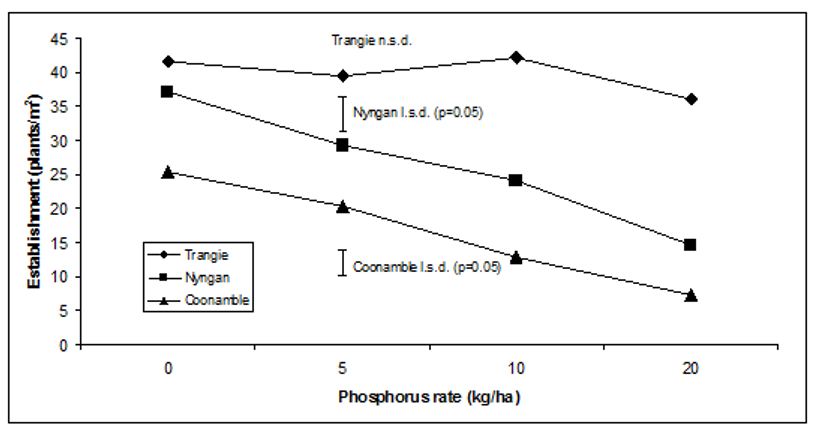
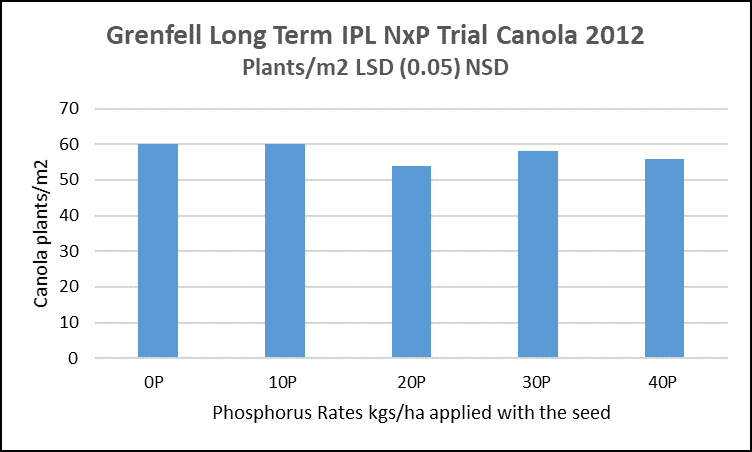
Source: Incitec Pivot Fertilisers
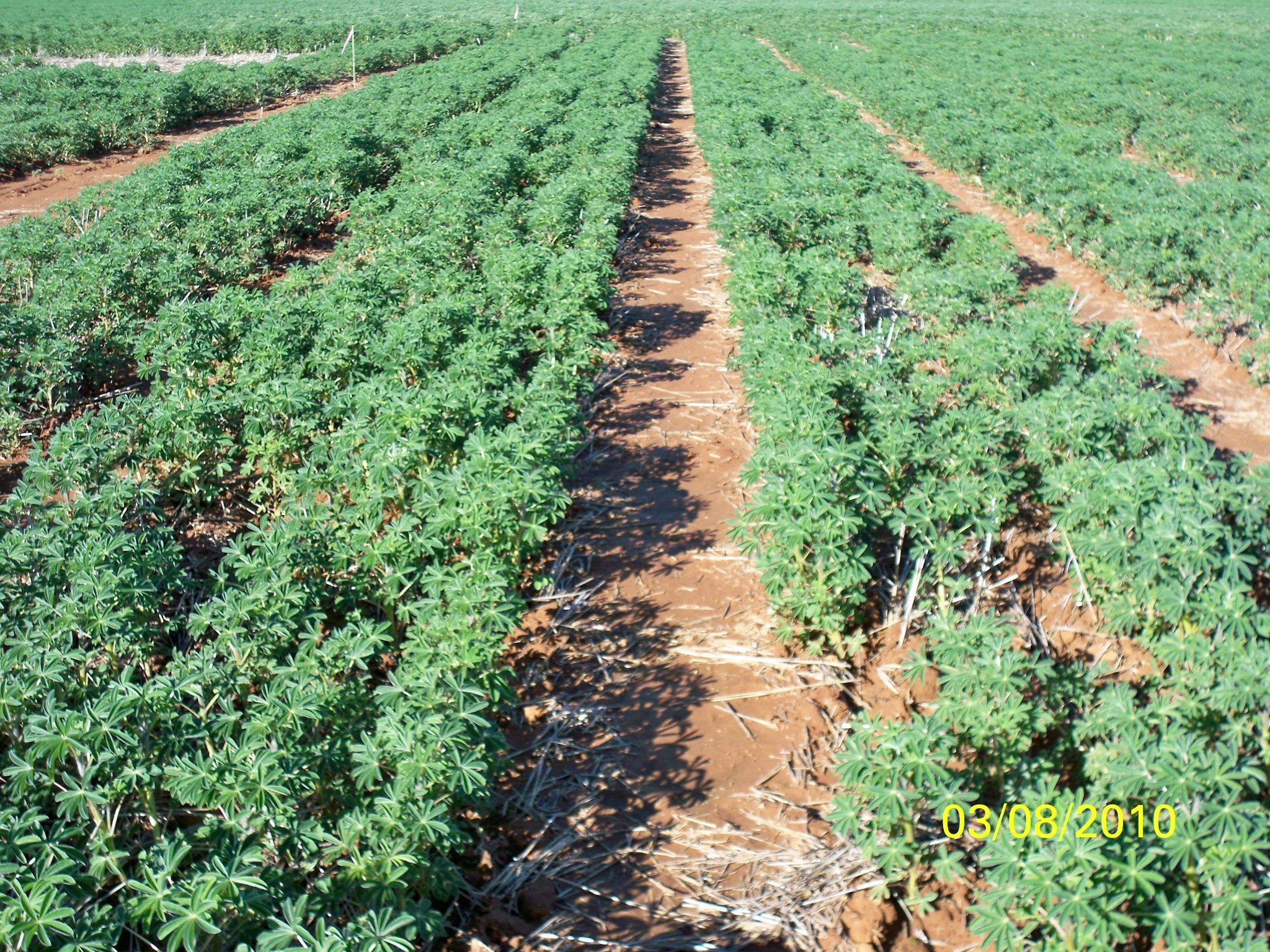
Crop type
Crops vary in their tolerance to fertilisers, with oats, barley and wheat more tolerant than lupins and chickpeas. Canola is the most sensitive winter crop type.
The difference in tolerance between canola and wheat can be seen in the trays in Photo 2. They were prepared with urea applied with the seed simulating a 33 cm row spacing with a seed furrow width of 25 mm, or an SBU of 7.6%.
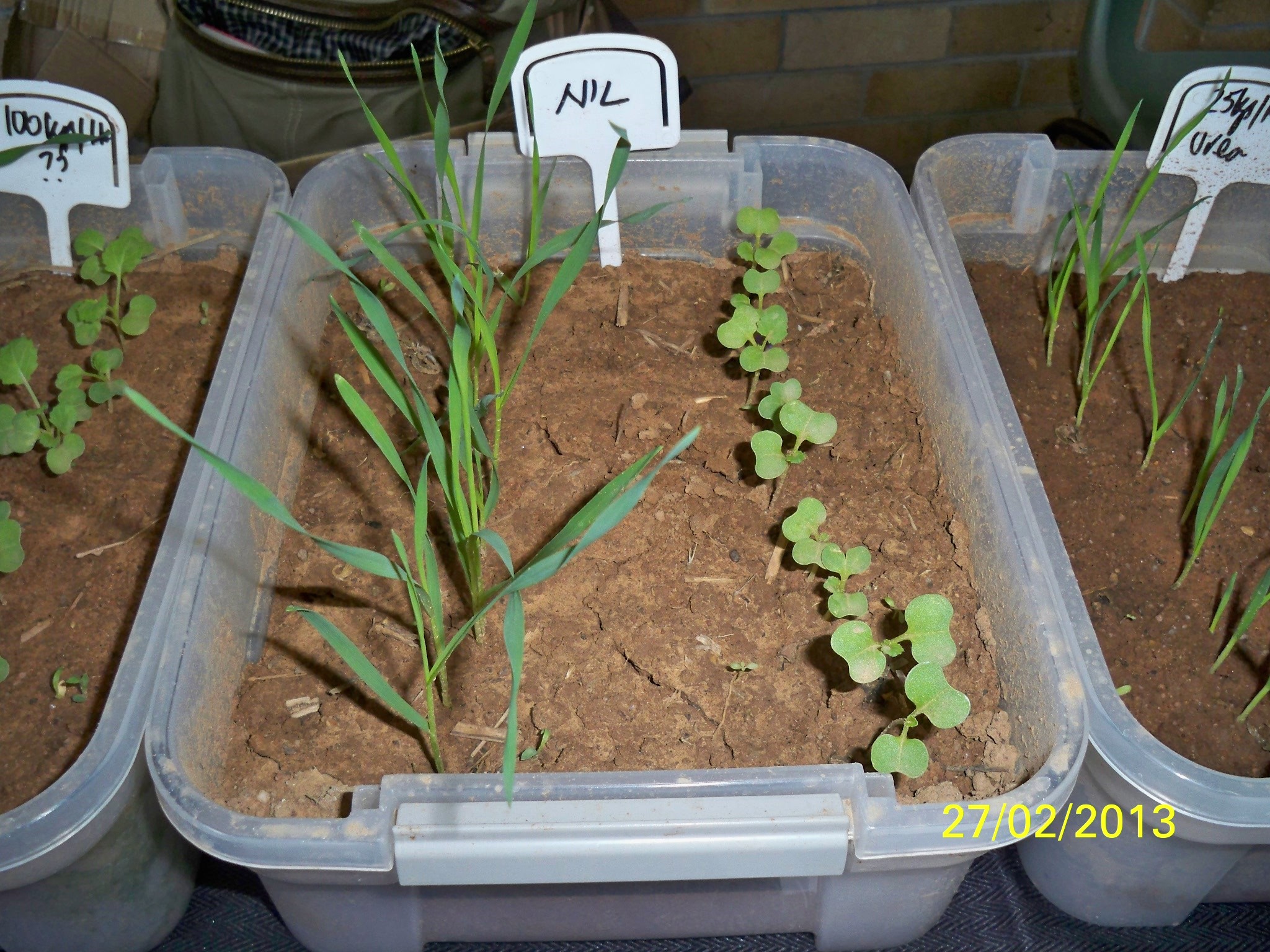
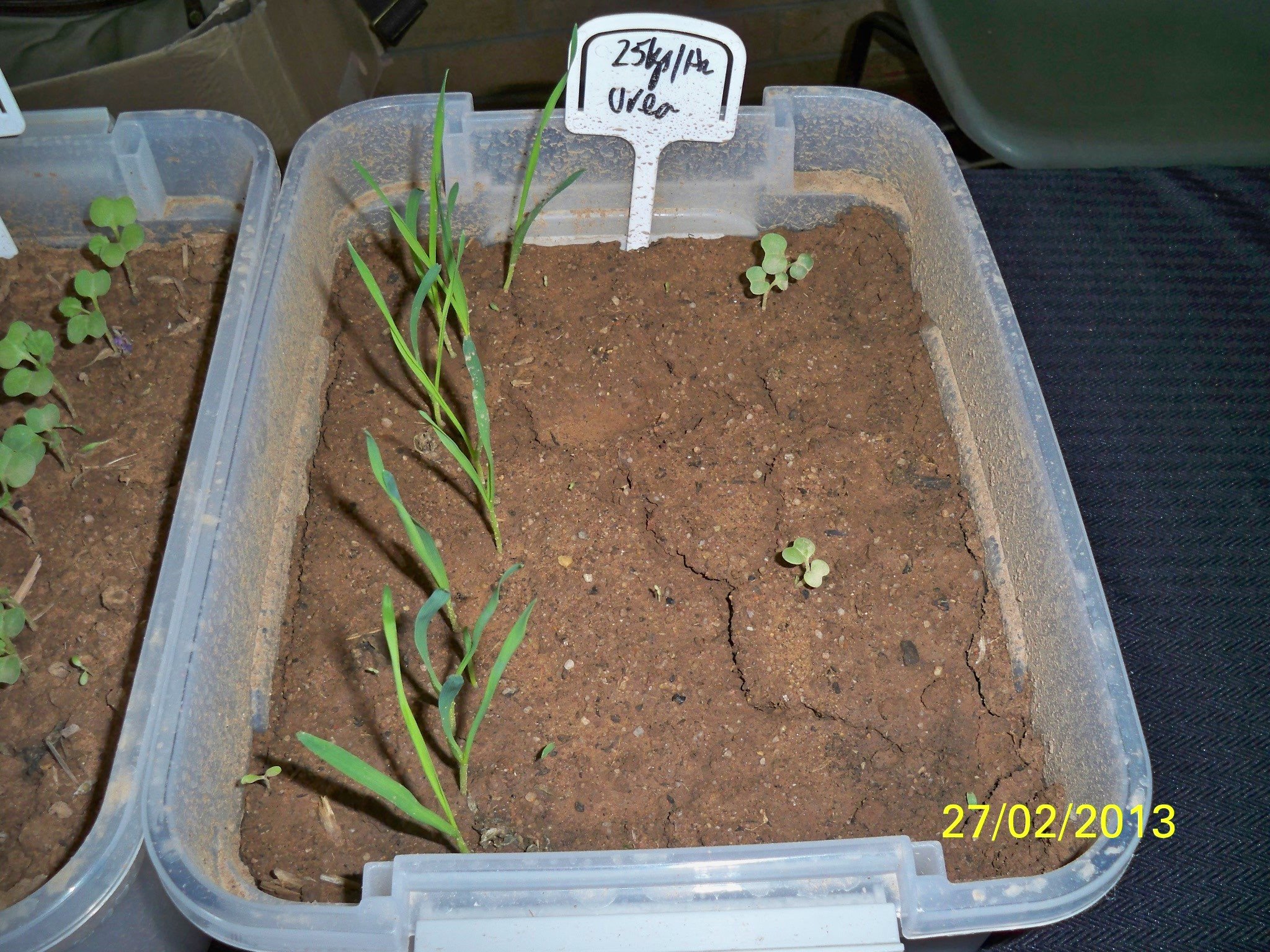
Growers can run test strips at sowing very easily to compare no fertiliser in the seed row with the rest of the paddock. This is an effective method to see whether the usual fertiliser rate is reducing vigour or plant populations.
External environment
Soil moisture has a major impact on the effect of fertilisers in contact with the seed. Fertilisers can further dry out soils around the seed by absorbing moisture. This reduces the viability of the seed.
In dry autumns and when planting into marginal moisture, it is common to see the negative impact that low soil moisture can have in reducing plant population and vigour. In seasons with high soil moisture levels at planting, crop damage is generally not an issue.
The rate of drying can be as important as the initial soil moisture during the germination and establishment phase. If soil moisture levels fall post-sowing, the potential for reduced emergence will increase.
Soils
There is a greater risk of seedling damage at any fertiliser application rate on sandy soils than on heavier clay soils. Soils with a high proportion of clay are better able to retain water and adsorb ammonia ions released from nitrogen fertilisers than coarse-textured soils.
Application equipment
The safest application equipment allows the fertiliser and seed to be applied in separate bands. Applying fertilisers below and to the side of the plant line with a minimum of 50 mm of separation is the most effective method of avoiding seed or root contact in winter crops. Also consider twin row, dutch opener type systems that give excellent flexibility with fertiliser applications.
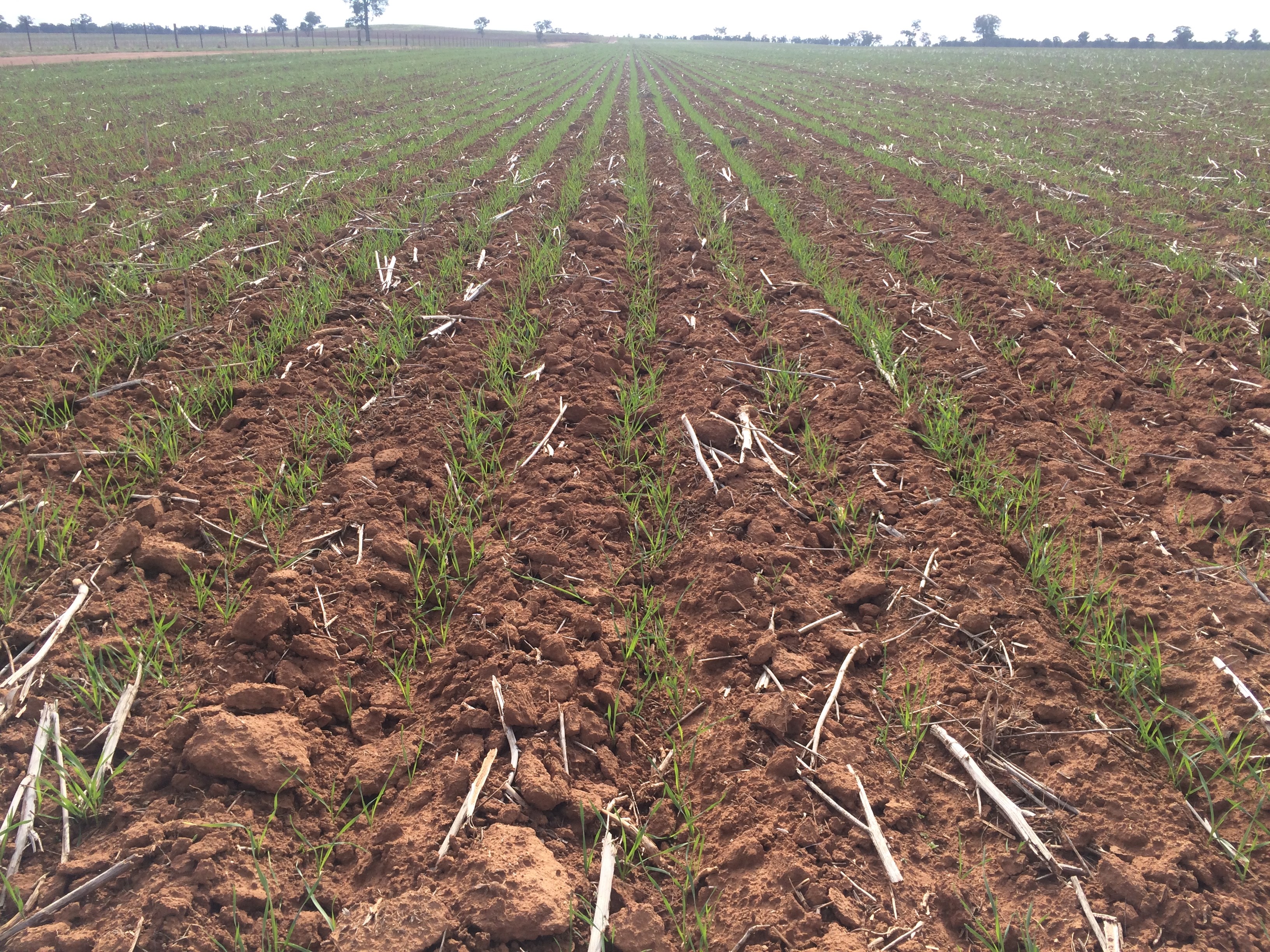
Any change in the application equipment should be considered for its potential to increase or decrease seed safety, even changes to row spacing. There is more than one grower who has learnt the hard way that increasing the row spacing and keeping fertiliser rates the same can result in reduced plant population. Don’t make this mistake!
Stay safe this season
The safest way to manage fertiliser application with the seed is to calculate the Seed Bed Utilisation percentage (SBU%) and look up the safe rates tables from Incitec Pivot Fertilisers (see below) and stay at or below the safe rates recommended. The SBU% is a risk analysis tool that can be used to determine the potential for emergence damage. It is calculated as follows:
SBU% = width of seed row (mm) x 100
row spacing (mm)
A high SBU% indicates a more dilute fertiliser band for a given application rate (kg/ha). This means more space and less potential for fertilisers to be in contact with the seed. The higher the SBU%, the higher the rate of fertiliser that can be applied with the seed.
Safe rates tables are available from Incitec Pivot Fertilisers – https://www.incitecpivotfertilisers.com.au/~/media/Files/IPF/Documents/Agritopics/SBU.pdf
. The tables allow you to determine safe rates based on the fertiliser type, crop type, soil moisture and soil type. There is also a calculator available on the International Plant Nutrition Institute’s website which offers answers to the safe rate question – http://seed-damage-calculator.herokuapp.com
For more information, feel free to contact me on 0427 006 047 or jim.laycock@incitecpivot.com.au
References:
1 Dowling, 1998
2 Brill, 2015
